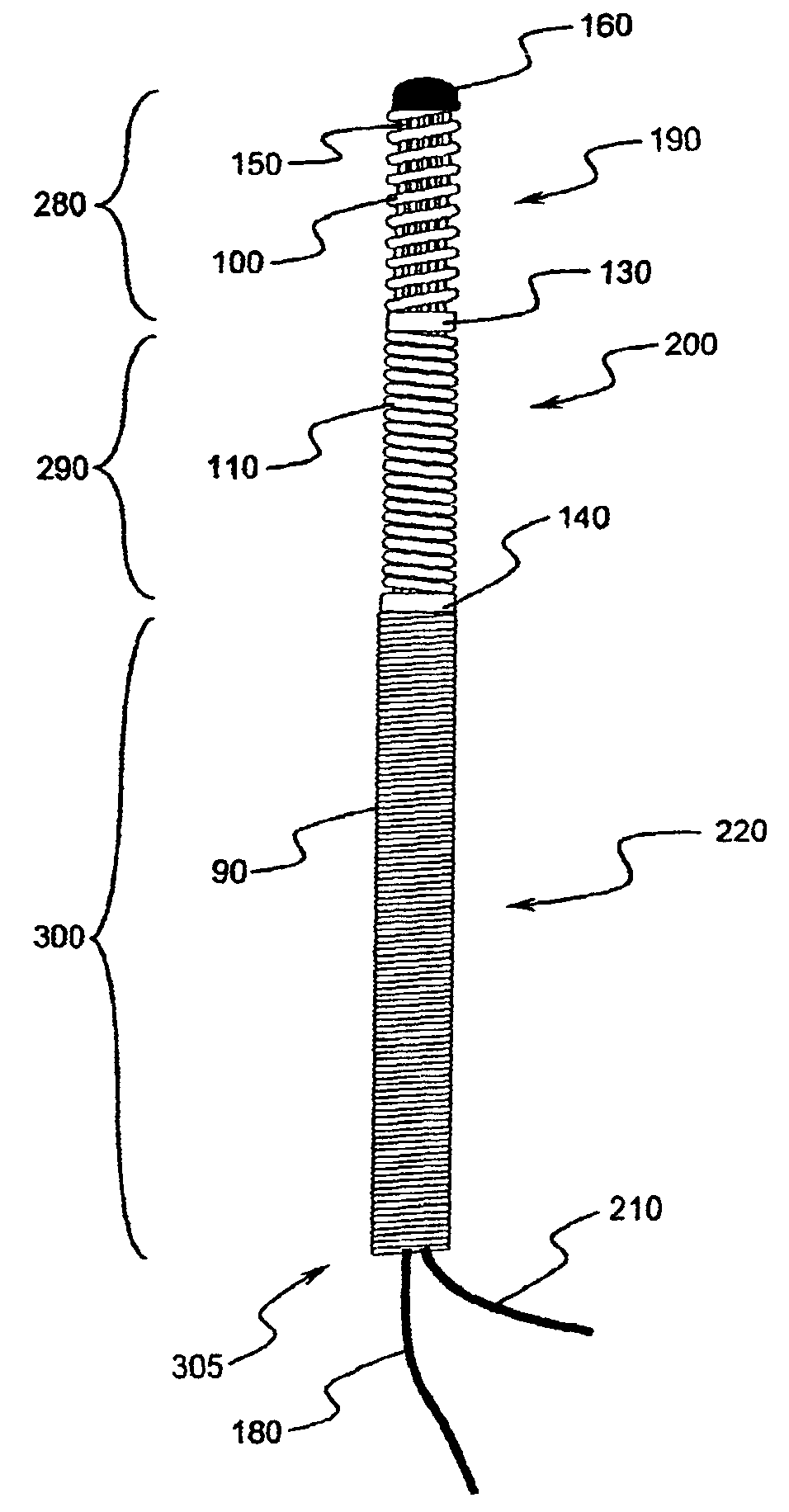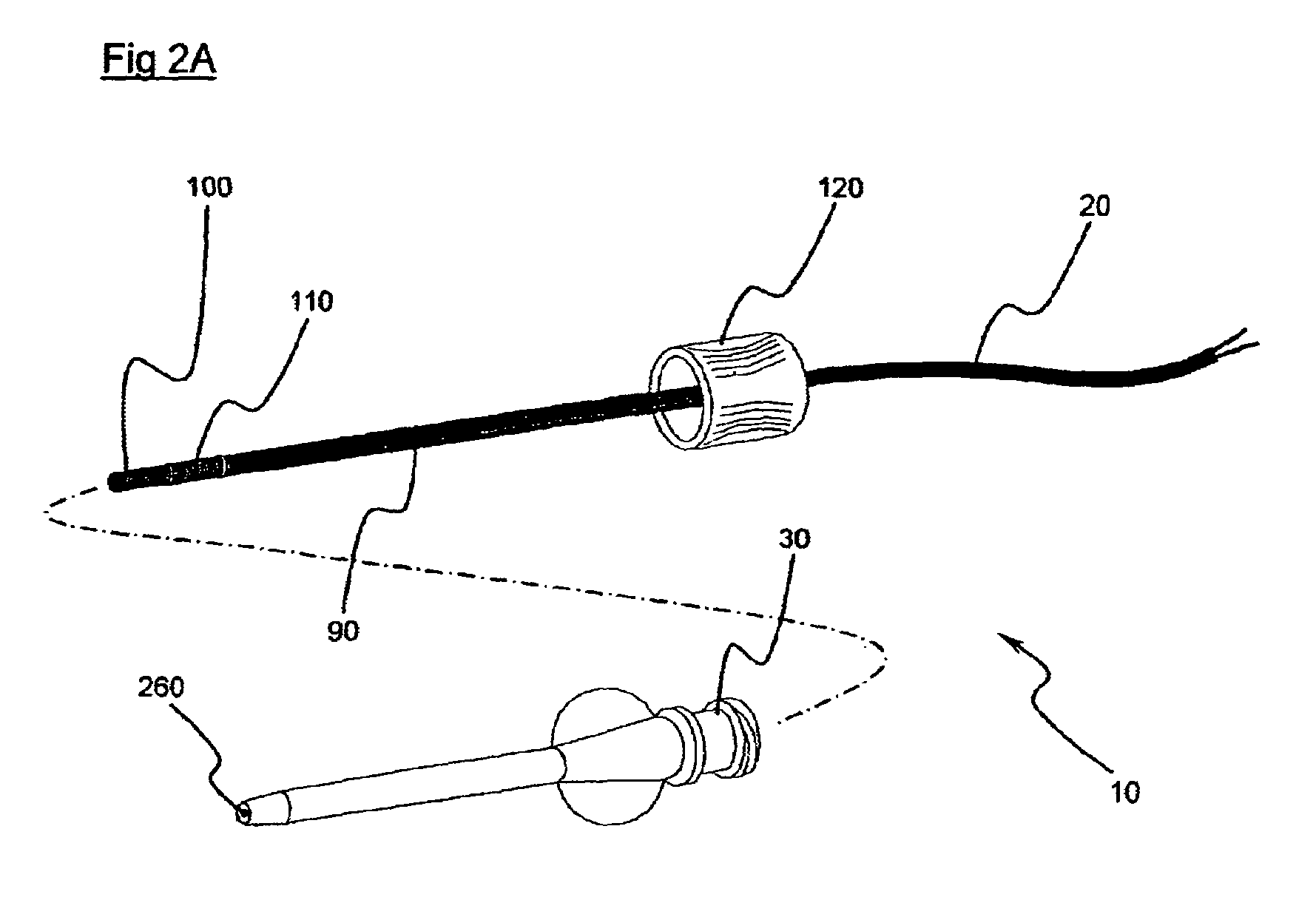Implantable biosensor system, apparatus and method
a biosensor and implantable technology, applied in the field of medical devices, can solve the problems of inadequate periodic information, less than optimal, and insufficient glucose in urine measurement, and achieve the effect of enhancing the biocompatibility of the biosensor with the tissue, and enhancing the volume of glucose oxidas
- Summary
- Abstract
- Description
- Claims
- Application Information
AI Technical Summary
Benefits of technology
Problems solved by technology
Method used
Image
Examples
embodiment 10
[0056]It can be appreciated that the introducer catheter 30, typically used in conjunction with a preferred embodiment 10, provides access from outside the body (not shown) to the tissue just under the skin layer (not shown). With reference to FIG. 2A, the biosensor 10 is inserted into and through a lumen 260 of the catheter 30 to a point at which the polymer cap 160, working electrode 100 and reference electrode 110 of the biosensor 10 protrude beyond and outside the catheter 30 lumen 260. Such placement allows the working electrode 100 and reference electrode 110 to be in communication with the surrounding tissue (not illustrated).
[0057]With reference to FIGS. 2B and 5, polymer cap 160, located at a head portion 270 of the biosensor 10, provides a conformal material that coats the fibers 170 extending beyond the working electrode 100 and adheres the fiber filaments 170 into the unified filament cap 150. The working electrode 100, as illustrated, extends along a leading portion, ge...
embodiment 330
[0061]The sensor catheter 340, like the introducer catheter 30, includes a lumen that may be thought of as an interior cannula lumen 450. Furthermore, the illustrated sensor catheter 340 presents an advanced end 460 designed for subcutaneous or other intra-tissue placement, an opposite end, generally 470, and a cannula wall 480 defining the interior cannula lumen 450 and comprising an exterior surface 490. The exterior surface 490 and the interior cannula lumen 450 extend between the advanced end 460 and the opposite end 470. In the biosensor embodiment 330, a reference electrode 500 is associated with the exterior surface 490 of catheter 340 in the vicinity of the advanced end 460. Electrode 500 may take other forms, such as a film, band, etching, printed or imprinted layer, or a shell or coating. The interior cannula lumen 450 is of sufficient cross-sectional diameter to pass the sensor 330. The advanced end 460 and exterior surface 490 of the sensor catheter 340 are structured an...
PUM
| Property | Measurement | Unit |
|---|---|---|
| diameter | aaaaa | aaaaa |
| diameter | aaaaa | aaaaa |
| size | aaaaa | aaaaa |
Abstract
Description
Claims
Application Information
 Login to View More
Login to View More - R&D
- Intellectual Property
- Life Sciences
- Materials
- Tech Scout
- Unparalleled Data Quality
- Higher Quality Content
- 60% Fewer Hallucinations
Browse by: Latest US Patents, China's latest patents, Technical Efficacy Thesaurus, Application Domain, Technology Topic, Popular Technical Reports.
© 2025 PatSnap. All rights reserved.Legal|Privacy policy|Modern Slavery Act Transparency Statement|Sitemap|About US| Contact US: help@patsnap.com



